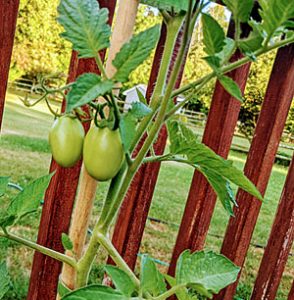6 Crop Rotation Tips for Backyard Gardeners
Switching around the way you lay out your gardens can benefit your plants in different ways. From moving by vegetable group to trying out companion planting, here are six answers to the question, “What are your most helpful tips for crop rotation in your backyard garden?”
- Move Each Vegetable Group Every Few Years
- Group Plants With Similar Nutrient Needs
- Rotate Every Other Year for More
- Try Cover Cropping
- Remember to Plant by Family
- Practice Companion Planting

Move Each Vegetable Group Every Few Years
“Crop rotation allows you to maximize the growth of your vegetation. Make it a habit to rotate each vegetable group at least once every three years to avoid pests from attacking your crops when grown in the same spot. This is a healthy practice that protects crop families and gives them a higher chance of propagating.”
Michelle Siy, Content Writer, Oliver Wicks
Group Plants with Similar Nutrient Needs
“Group plants with comparable nutrient requirements together as part of a backyard garden’s crop rotation strategy. As a result, there will be less chance of particular plant family-specific pests and diseases and less risk of the soil’s unique minerals being depleted.”
“For instance, you may group together nightshade plants (such as tomatoes, peppers, and eggplants) and then alternate them with legume plants (such as peas and beans) during the next growing season. As a result, the soil will be able to replenish the minerals that the nightshade family consumed while still receiving nitrogen from the legume family. This will help keep the soil fertile and enhance the overall health of your garden.”
Miguel Palma, Gardener, JardinTienda
Rotate Every Other Year for More
“While three years is generally known to be the recommended length for crop rotation, many smaller gardens benefit more from crop rotation every other year. The variation in crops gives the gardener more variety and also opens up ideas for more combination opportunities to complement the plots in the future. Complementary plots benefit each other’s growth and make a garden ultimately stronger overall, too.”
Alexandre Robicquet, Co-Founder & CEO, Crossing Minds

Try Cover Cropping
“Cover cropping is planting a non-edible crop, such as clover, rye, or alfalfa, between growing seasons or in locations where an edible crop is not currently being cultivated. Many approaches exist for these cover crops to contribute to better soil health.”
“For instance, they can amend the soil with organic matter to increase its fertility and structure. They may also control weeds by out-competing them for resources and aid in reducing erosion by keeping the soil in place with their roots.”
“In the backyard garden, cover cropping may promote biodiversity besides bettering soil health. Beneficial insects like bees and ladybugs, as well as other species like birds and butterflies, can find food and a home under cover crops. This might assist the growth and productivity of edible crops by fostering a healthy ecology in the garden.”
Mark Peters, Environmental Consultant, Are They Eco
Remember to Plant by Family
“This means we should not plant plants from the same botanical family in the same spot year after year.”
“For example, if you plant tomatoes in one spot one year, you should not plant tomatoes, peppers, or eggplants in that spot the following year. This is because all these plants belong to the same botanical family and they are susceptible to many of the same pests and diseases. By rotating the crops, you can help reduce pest and disease pressure, improve soil health, and increase crop yields.”
Ralitsa Dodova, Content Writer, BuzzLogic

Practice Companion Planting
“A great tip for crop rotation in a backyard garden is to use the practice of companion planting. This involves planting certain vegetables or flowers together that have beneficial effects on one another, such as repelling insects or providing nitrogen to the soil.”
“For example, you could plant basil with tomatoes—not only will the basil repel some insects, but it also has a high oil content that can help enrich the flavor of your tomatoes.”
Derek Bruce, Sr. Director, Newcastle First Aid Courses
Crop Rotation Basics
Here are some basic crop rotation tips to get your backyard garden into a good pattern.
- Rotate Frequently – Aim to rotate crops every 2 years or every year, depending on your needs.
- Amend the Soil – If you cannot rotate or didn’t do it this year, you can amend the soil with new soil mix and/or compost.
- Improve Nitrogen – You can easily replace nitrogen in the soil with beans, peas, and legumes. These nitrogen fixing crops work well when planted in a space that used to have potatoes and tomatoes (nightshades).
- Likewise, planting lettuce, spinach, and kale in a space after beans can help these leafy plants thrive. Higher nitrogen concentration helps plants devote energy to leafing out and developing foliage.
- Likewise, planting lettuce, spinach, and kale in a space after beans can help these leafy plants thrive. Higher nitrogen concentration helps plants devote energy to leafing out and developing foliage.
- Coordinate Crop Rotation & Companion Planting – Keep in mind that order of planting as well as planting companions matter.
FAQs
Like lots of gardening techniques, crop rotation may take a little bit of practice to settle into a process that works for you.
Some gardeners swear by the process of rotating crops. Other gardeners insist that adding compost, fertilizer, and replenishing nutrient deficiencies in soil is more than adequate.
What’s your take? Will you try crop rotation or do you see no need for it in your backyard garden?
Do you have any favorite crop rotation tips to share? Feel free to hit us up in the comments with your own insights and advice or ask any questions you may have.
Happy Gardening!






